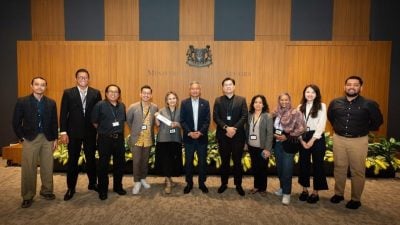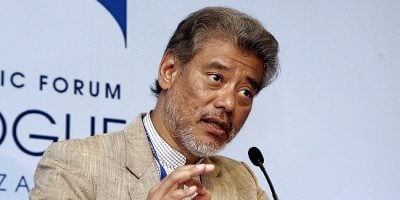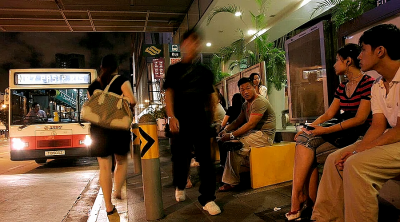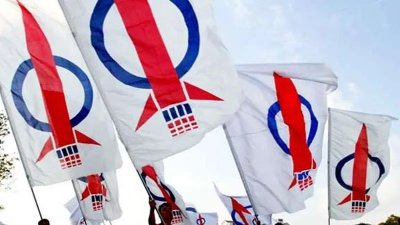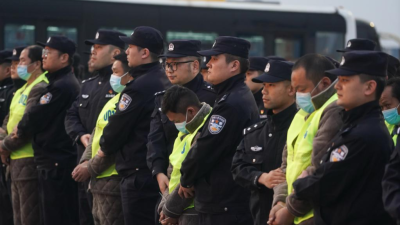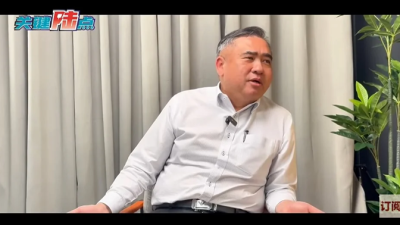
The re-election of Donald J. Trump has unleashed a second wave of transactional foreign policy, which—true to form—values bilateralism over multilateralism and “Deals First” over rules-based diplomacy.
In Southeast Asia, this shift threatens the already fragile architecture of ASEAN Centrality. And the effects are becoming increasingly visible.
Nowhere is this clearer than in the evolving tensions between Indonesia and Singapore.
Indonesia’s recent move to scale back refined fuel imports from Singapore—amounting to a potential 60 percent reduction—is more than an energy trade adjustment.
It signals a deeper assertion of economic nationalism, framed through the prism of green energy sovereignty.
With President Prabowo Subianto at the helm, Jakarta is intent on positioning itself as the primary arbiter of its energy transition.
In doing so, Indonesia is sending a signal to the region: large states will no longer be bound by conventions or sensitivities if national strategic interest is perceived to be at stake.
Singapore, with limited land mass and heavy reliance on services, is particularly vulnerable to such shifts.
Only 20 percent of its GDP is based on industrial manufacturing, with the rest heavily dependent on logistics, finance, and its longstanding position as Southeast Asia’s most advanced transshipment and trade hub.
In a regional landscape where hard commodities, infrastructure, and bilateral trade arrangements are being aggressively pursued with Washington, Singapore finds itself constrained—both geographically and diplomatically.
As countries like Indonesia, Vietnam, and the Philippines begin securing their own separate energy, infrastructure, and strategic agreements with the United States under Trump’s “America First” framework, Singapore faces marginalization.
It lacks the commodity leverage of its neighbors and has little room for agricultural or industrial expansion.
It cannot offer oil or land in abundance, nor can it wield geopolitical heft without close collaboration with its neighbors.
This is precisely where Singapore’s strategic future hinges on deeper regional integration—especially with Malaysia.
The proposed Singapore-Johor Economic Development Zone (SJEDZ) must evolve from a bilateral initiative into a template of ASEAN synergy.
Through this zone, Singapore can gain access to land, water, and labor resources, while Malaysia, especially southern Johor, benefits from Singapore’s capital, logistics expertise, and global financial links.
It is important to know Malaysia is 640 times larger than Singapore and do not harbor any malevolent designs.
The economic logic is compelling, but the environmental and geopolitical factors are even more urgent.
The coming decade will be defined by the construction and operation of large-scale Data Processing Centers (DPCs)—the backbone of the digital economy and artificial intelligence infrastructure.
These facilities are voracious consumers of water and electricity.
Singapore alone cannot host the next generation of such centers without a dependable water supply and additional land.
Johor, aided by water transfers from Pahang, is well-positioned to complement Singapore in this effort. But this model demands coordination, not competition.
Up to 25 percent of the water needed for data center cooling in Johor could be drawn from the Pahang pipeline by 2030, underscoring how deeply intertwined Malaysia’s and Singapore’s futures already are.
Yet beyond bilateral cooperation, the region must think more boldly.
The ASEAN Power Grid (APG)—first conceptualized in the late 1990s—was intended to knit Southeast Asia together through shared energy infrastructure.
The APG was designed to facilitate cross-border electricity trade, optimize energy resource use, and promote regional sustainability.
However, progress has been stymied by a mixture of nationalist hesitations, infrastructural imbalances, and regulatory incoherence.
Many countries, such as Indonesia and Vietnam, remain reluctant to integrate their domestic energy markets due to fears of foreign dependency and loss of sovereignty. Electricity remains a sensitive issue—both politically and strategically.
National grids are symbols of development and pride. Opening them up to regional exchanges can be seen as a loss of control.
Compounding this are the vast differences in energy infrastructure development across ASEAN.
While Singapore, Malaysia, and Thailand have high-capacity, modern grids, countries such as Laos, Cambodia, and Myanmar still face infrastructural limitations, leading to uneven development and bottlenecks that slow regional integration.
Further complicating matters is the divergence in energy regulations.
Each country has its own set of subsidies, tariff regimes, and renewable energy incentives. These regulatory discrepancies make the standardization of cross-border energy sharing difficult.
Without synchronized rules and compatible grid systems, the APG risks remaining more of a vision than a reality.
Yet the promise of the ASEAN Power Grid is enormous.
In an era of climate emergency, regional energy integration could facilitate a faster and fairer green transition.
It would enable the sharing of hydropower from Laos, solar energy from Vietnam and Thailand, and the distribution of electricity across borders to reduce reliance on coal and imported fossil fuels.
It also provides a tangible mechanism for ASEAN to embody its centrality—not merely through summit declarations but through functional, economic interdependence that makes conflict costlier and cooperation more rewarding.
This is where the Trump Doctrine, with its emphasis on bilateral deals and a zero-sum worldview, becomes truly corrosive.
By incentivizing ASEAN states to act alone—through individual trade deals, energy arrangements, or digital infrastructure pacts—the US under Trump II is actively undermining the spirit of consensus and community that ASEAN was built upon.
The more ASEAN member states seek separate deals with external powers, the weaker the organization’s coherence becomes.
But not all is lost. In fact, Prime Minister Anwar Ibrahim of Malaysia is uniquely positioned to resist this fragmentation.
As current ASEAN Chair and a long-time advocate of civilizational dialogue and regional cooperation, Anwar has shown he understands that ASEAN cannot be allowed to disintegrate into a theater of competing deals and national egos. Nor must China, Japan and South Korea peel away from ASEAN.
Anwar recognizes that centrality is more than just convening summits—it is about institution-building, infrastructure-sharing, and forging regional resilience against external volatility.
His leadership in advancing the ASEAN-GCC-China Summit and the Asia Zero Emissions Community (AZEC) shows a commitment to large, inclusive platforms that bridge West and East Asia.
Anwar’s challenge to Trump-style bilateralism is rooted not just in policy, but in philosophy.
He envisions ASEAN not as ten disparate economies, but as one region with shared destiny, vulnerable to the same disruptions, and capable of solving them—together.
Whether on energy, digital infrastructure, or climate action, his insistence on unity, equity, and multilateralism is a quiet but firm rebuke to the new American unilateralism.
In short, the center of ASEAN is not just a slogan. It is a discipline. And in the second Trump era, that discipline will be sorely tested—unless ASEAN, beginning with its core states and visionary leaders such as Anwar Ibrahim, chooses solidarity over fragmentation.
But Anwar must not be distracted by party or coalition politics in Malaysia. That is paramount.
China, Japan and South Korea also must not snipe and each other. Other members of East Asian Summit (EAS) can be brought to the fray. Not to pressure Trump.
But to help him understand, US economy is too entwined with Asian ones to attempt any wild decoupling.
(Phar Kim Beng is Professor of ASEAN Studies at the International Islamic University Malaysia and Visiting Faculty at the Asia-Europe Institute, University of Malaya. He is a Harvard and Cambridge Commonwealth Fellow.)
ADVERTISEMENT
ADVERTISEMENT






